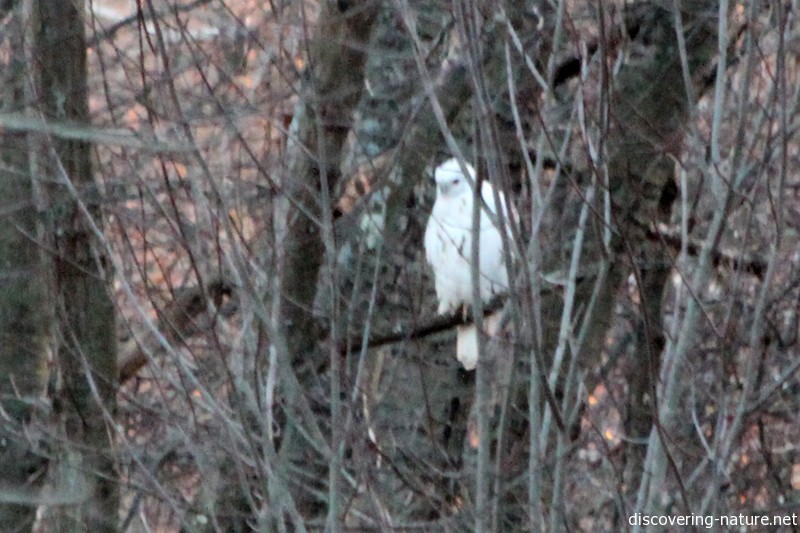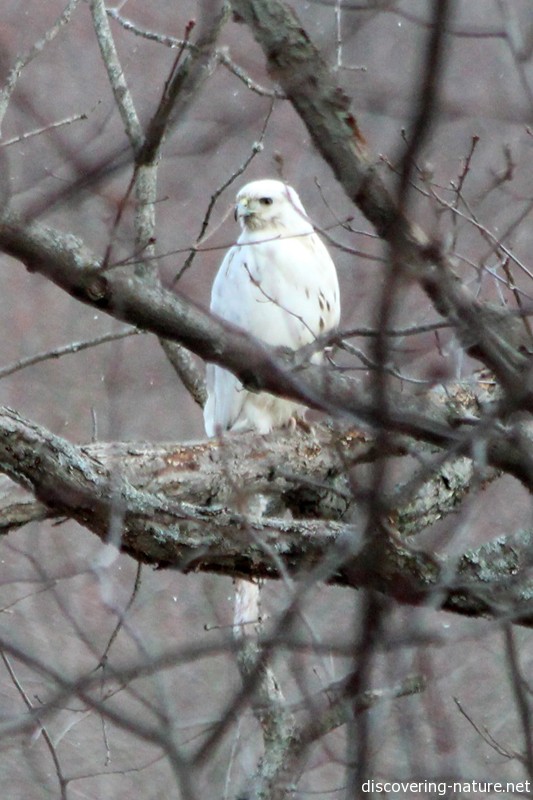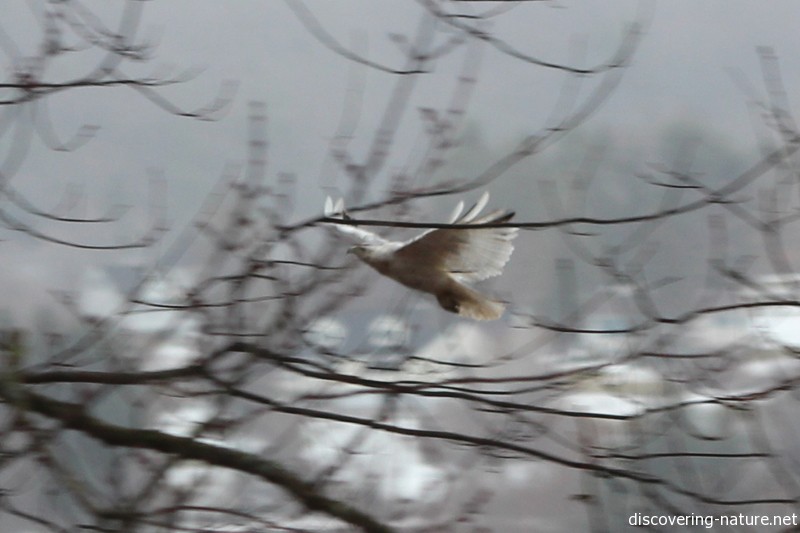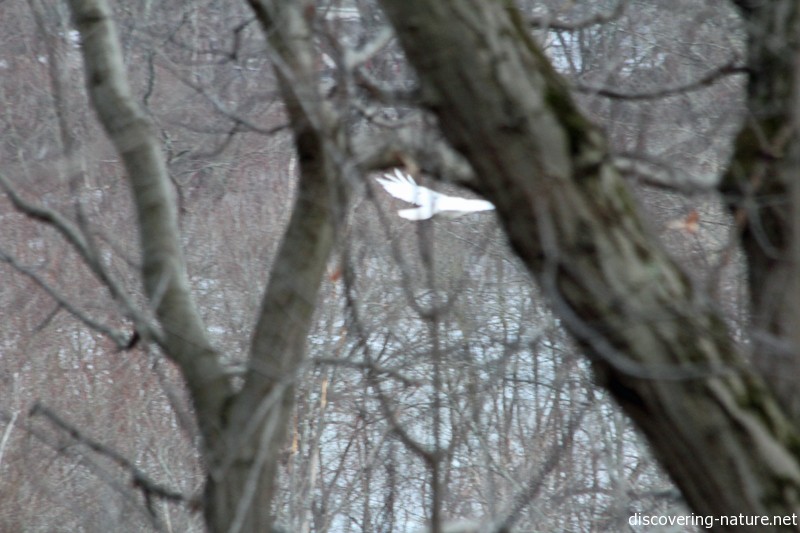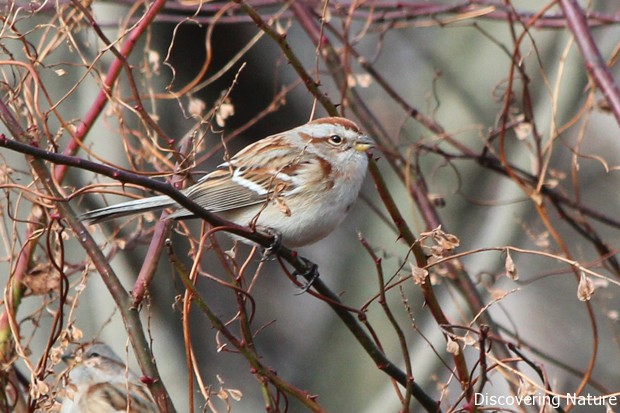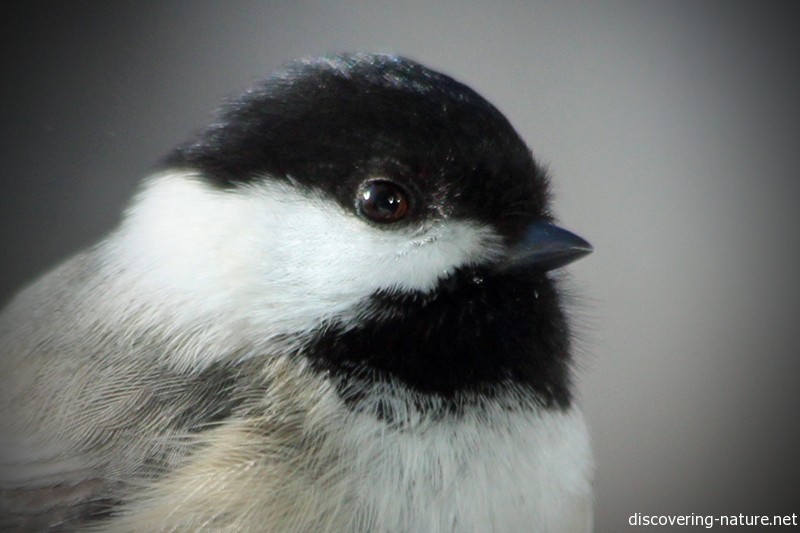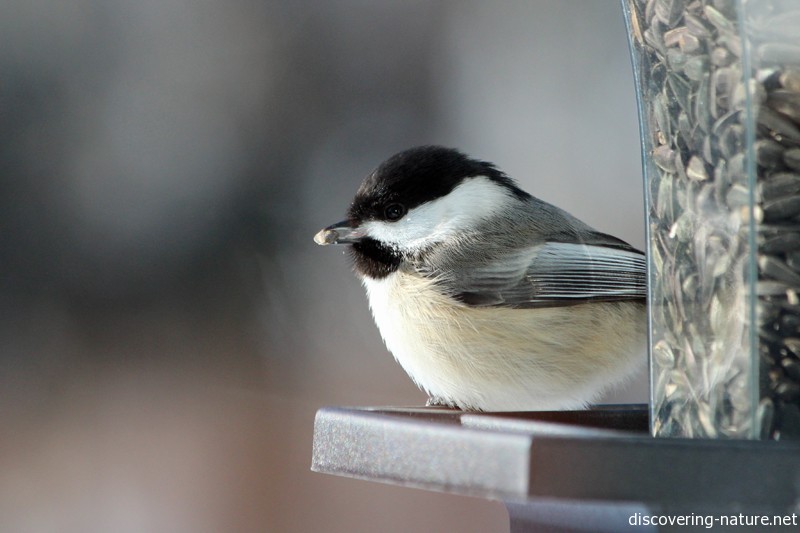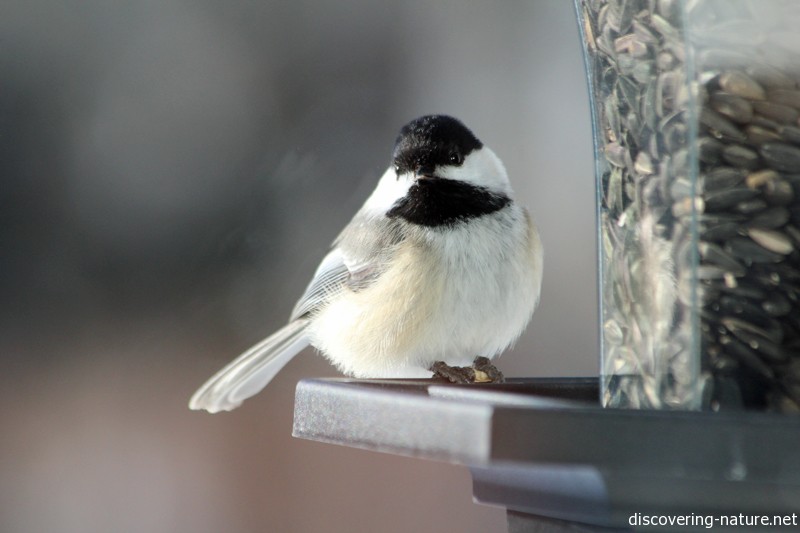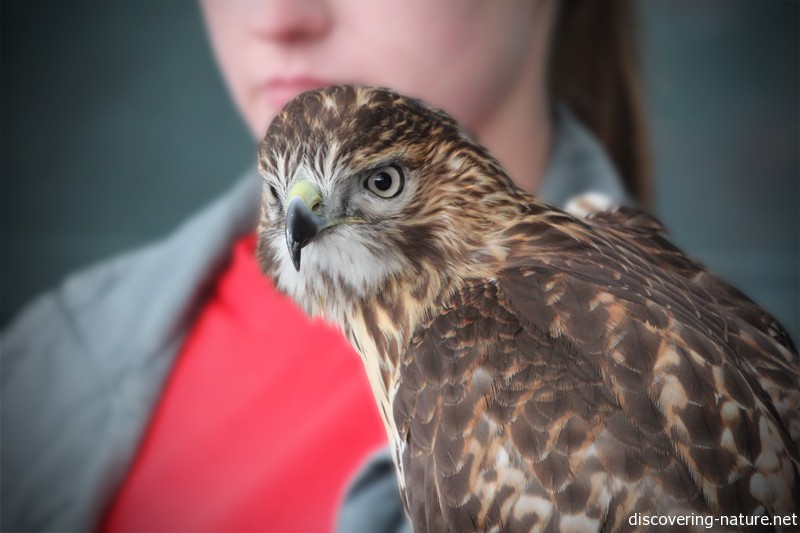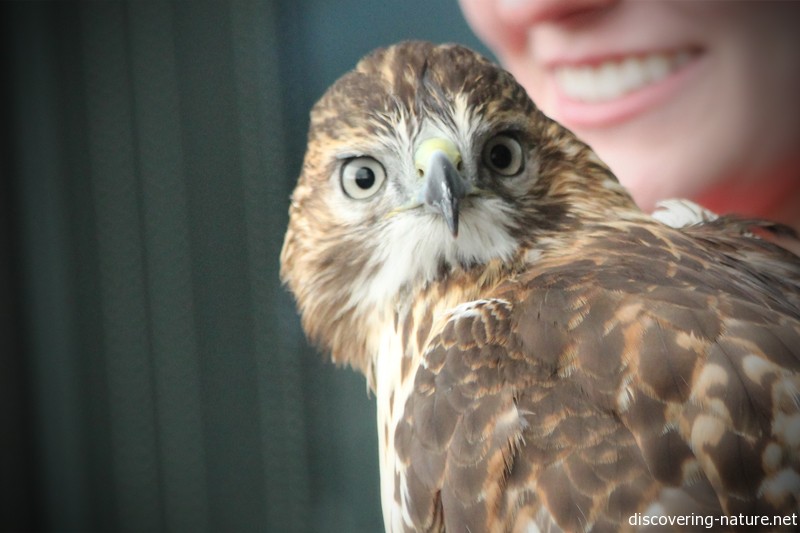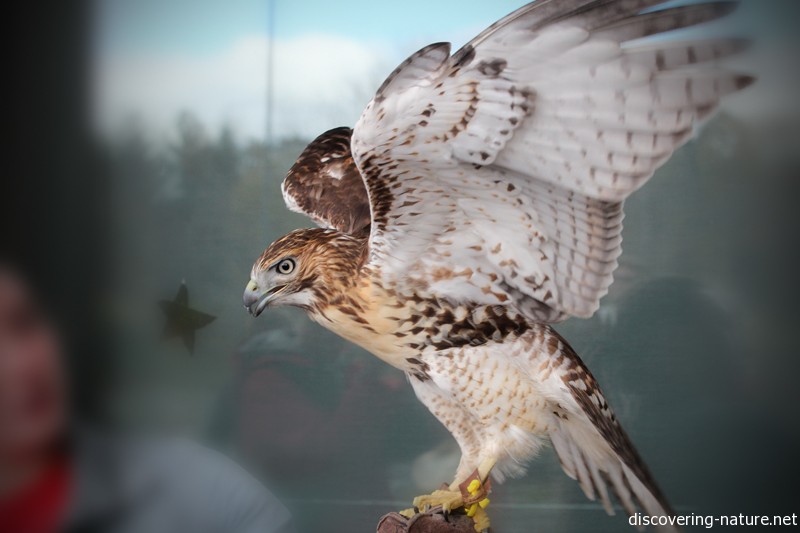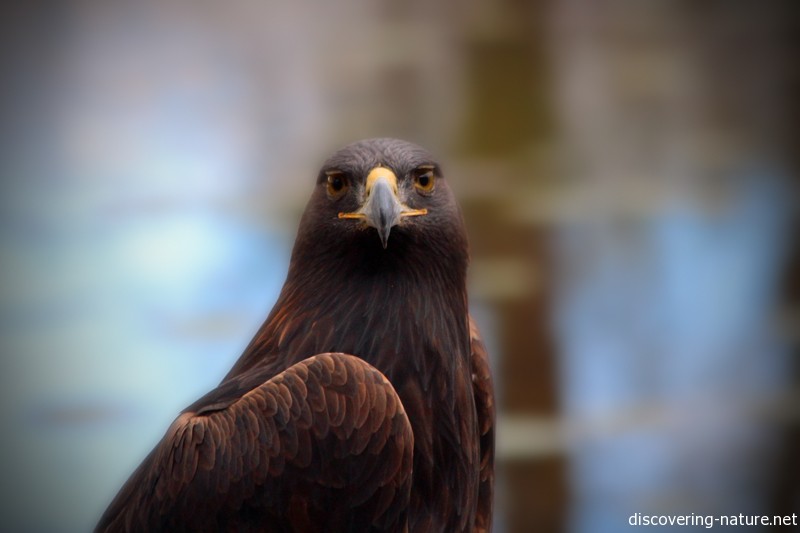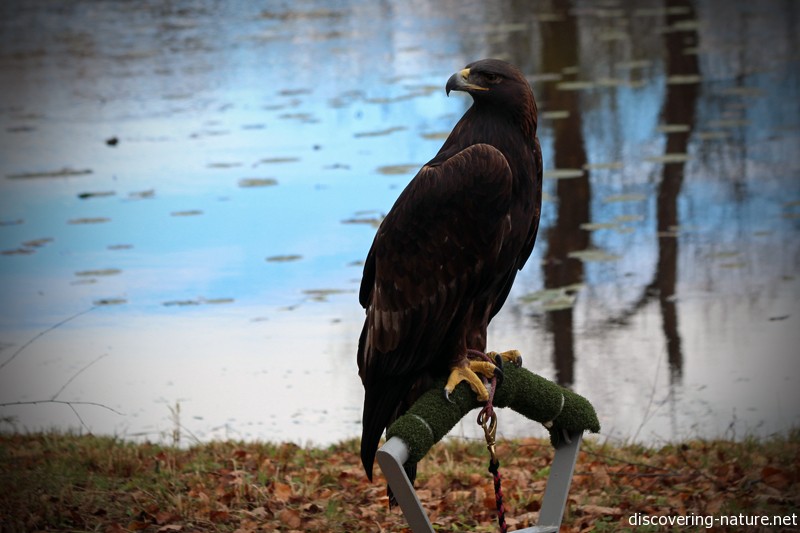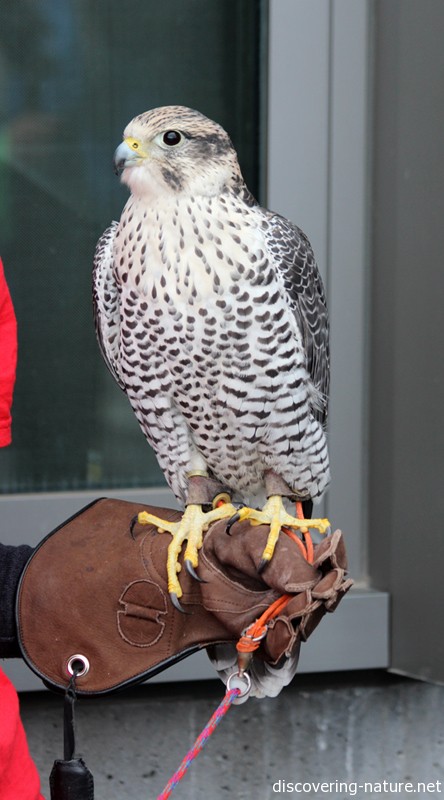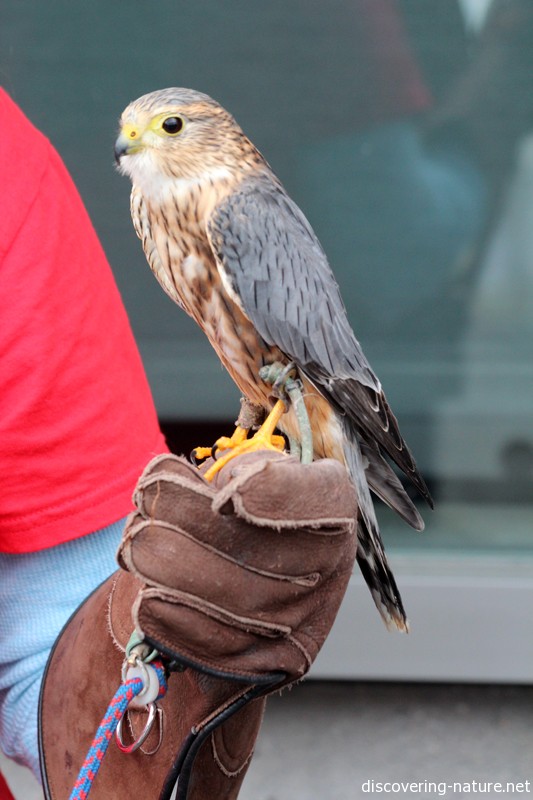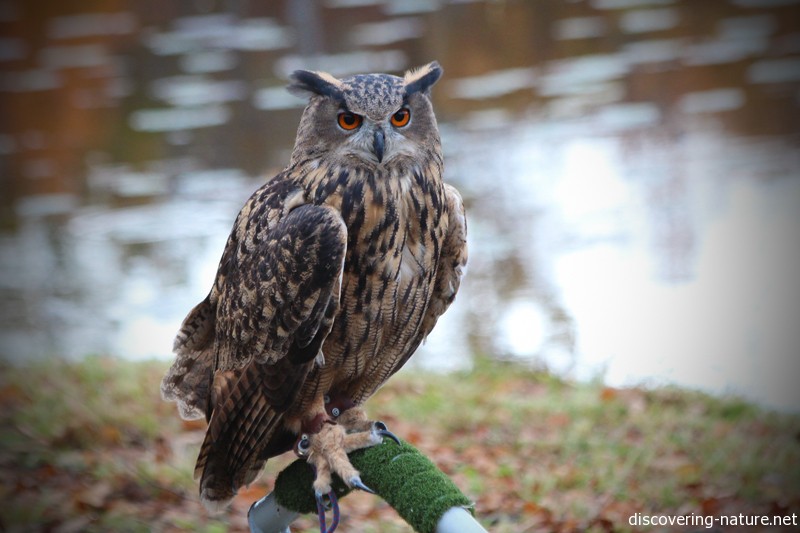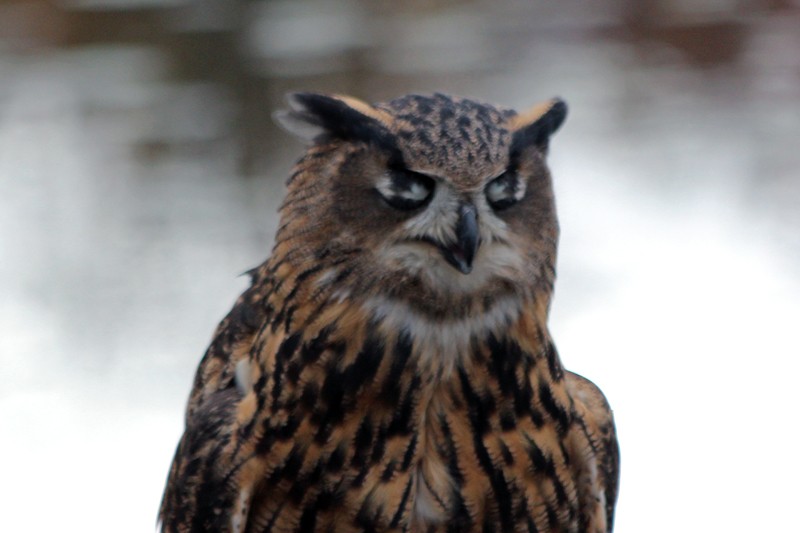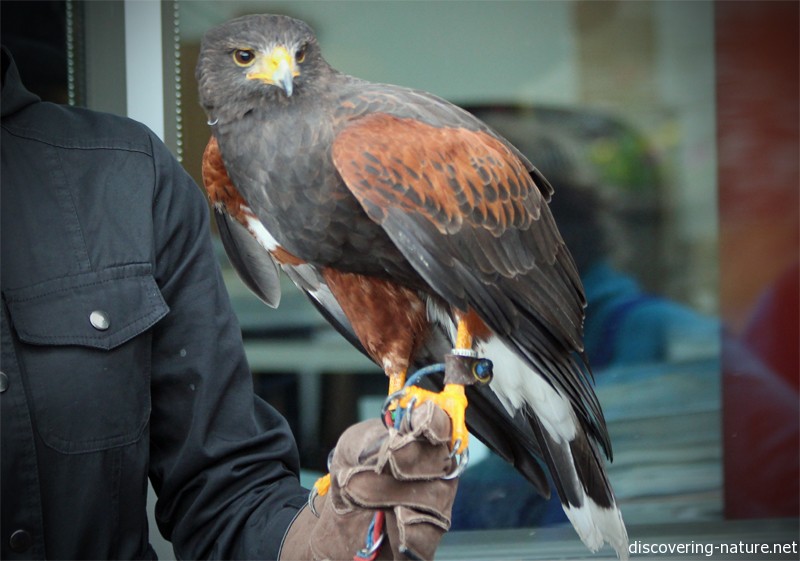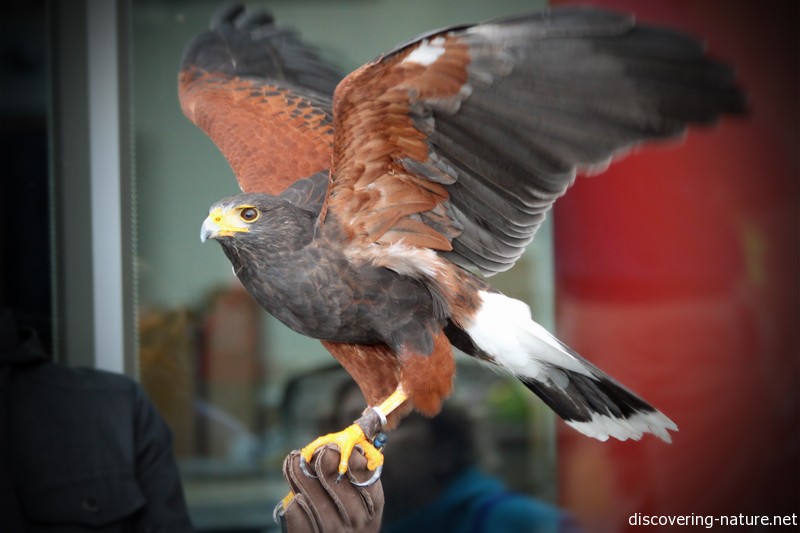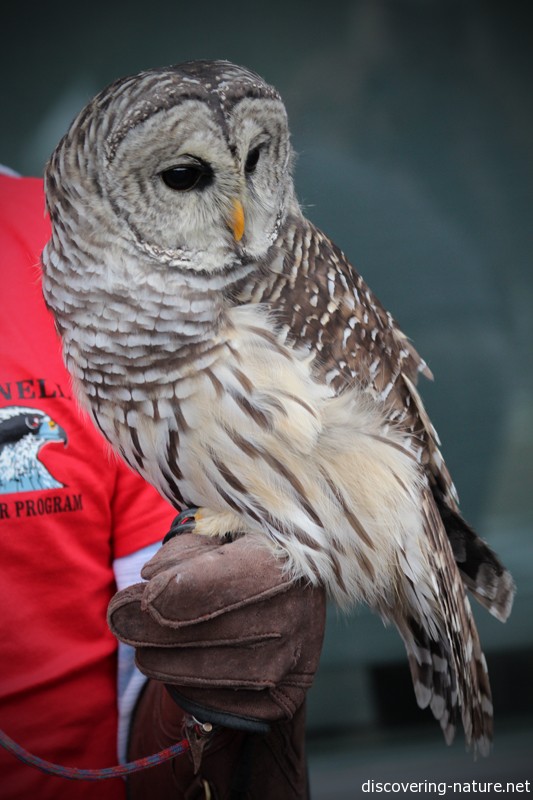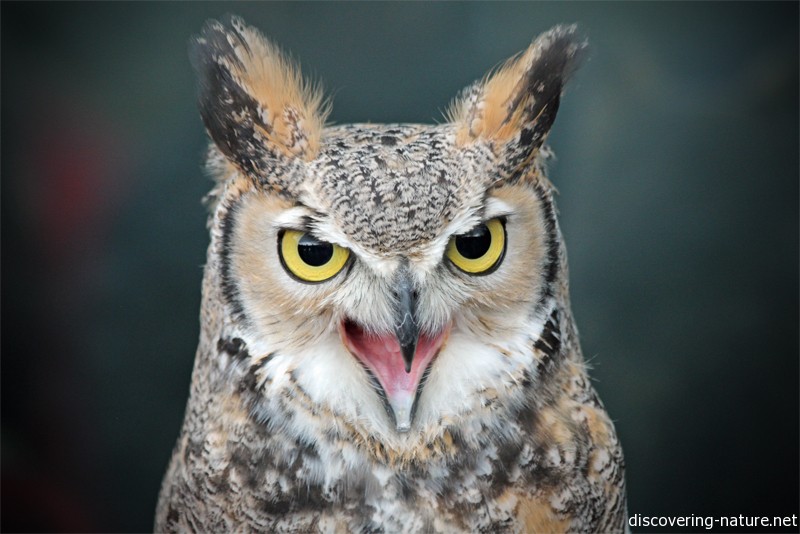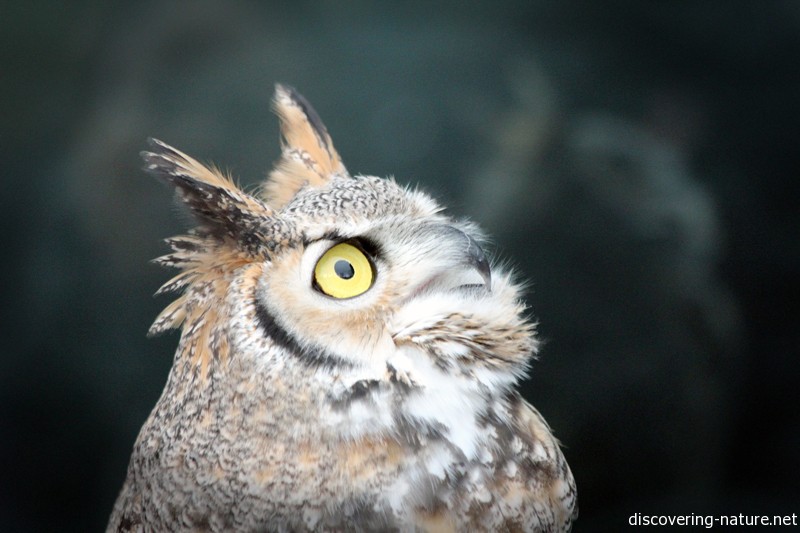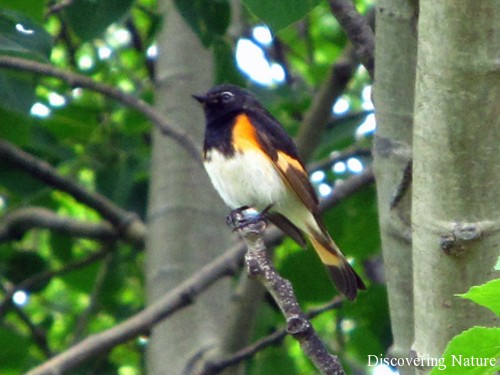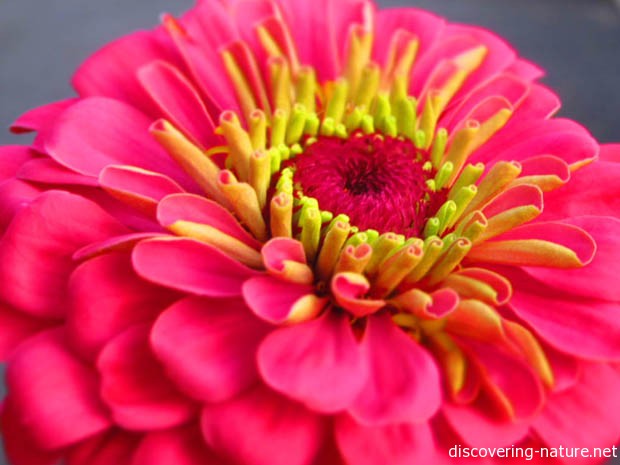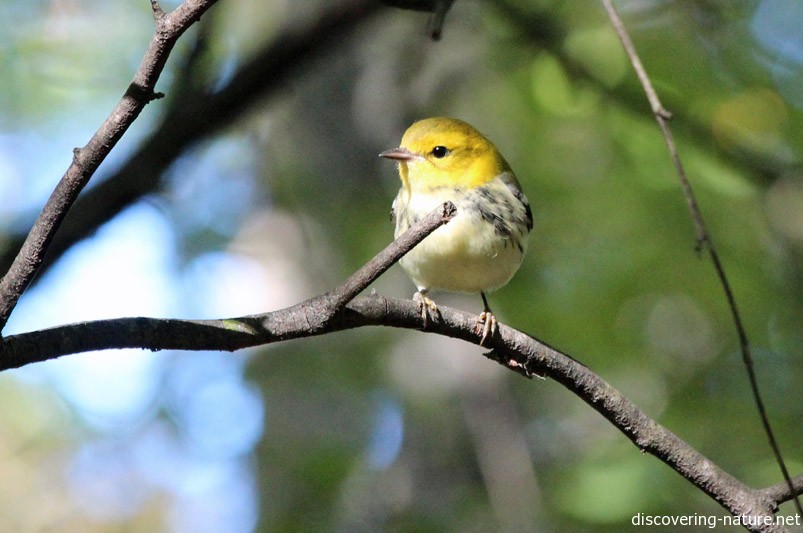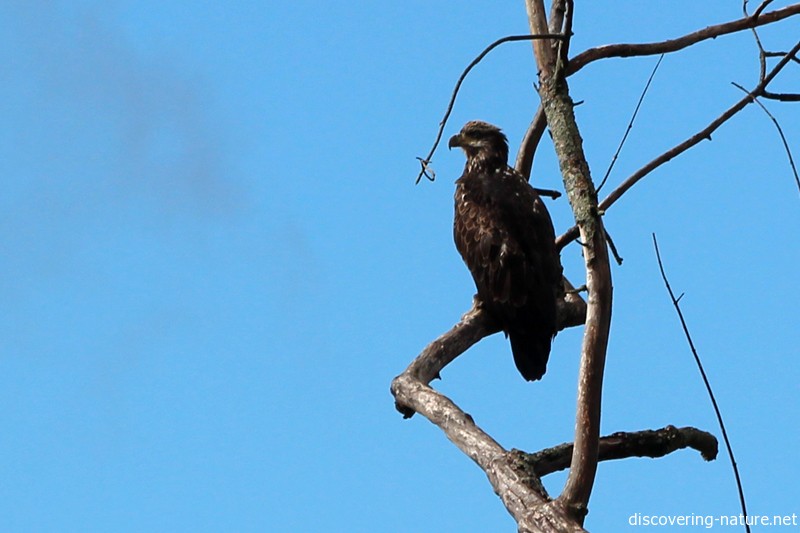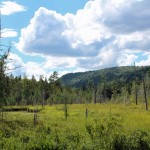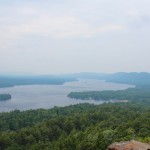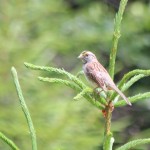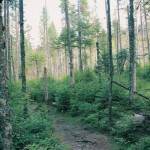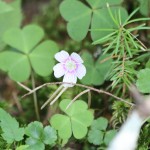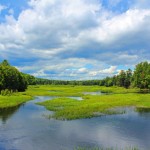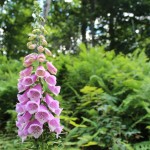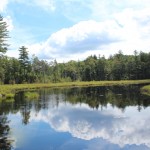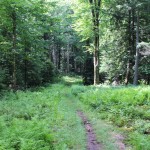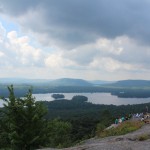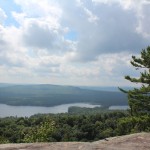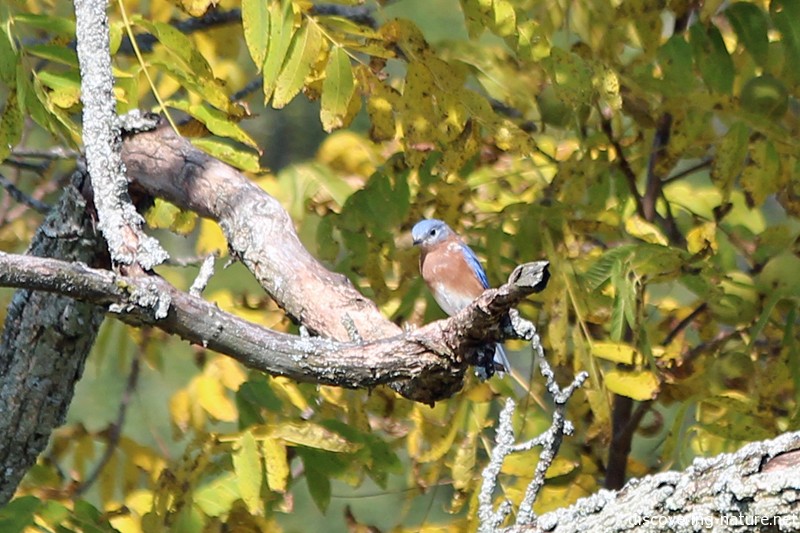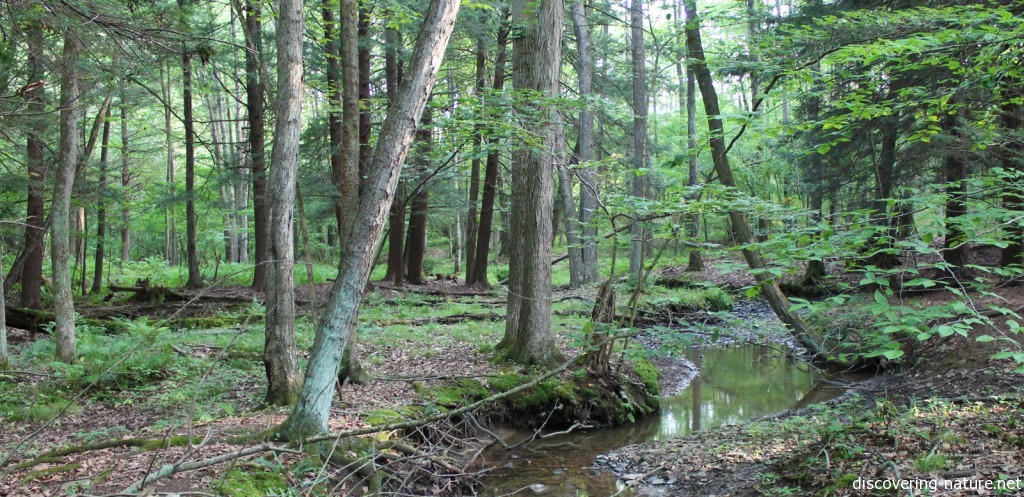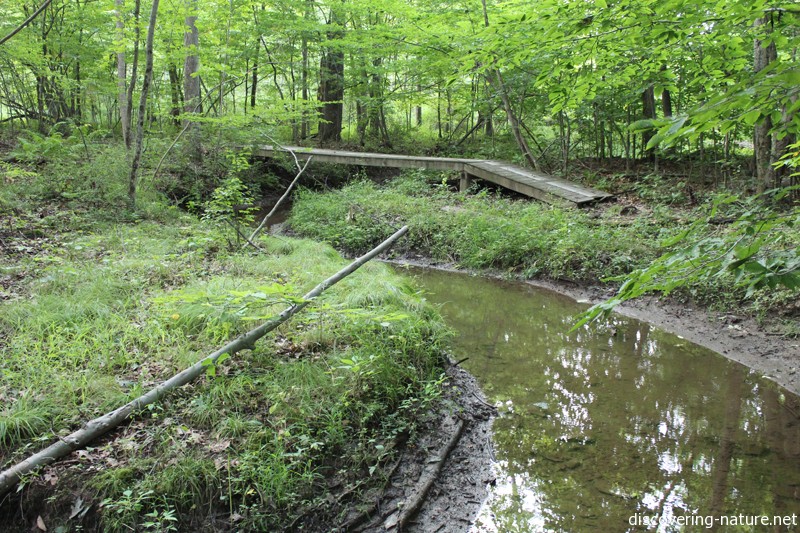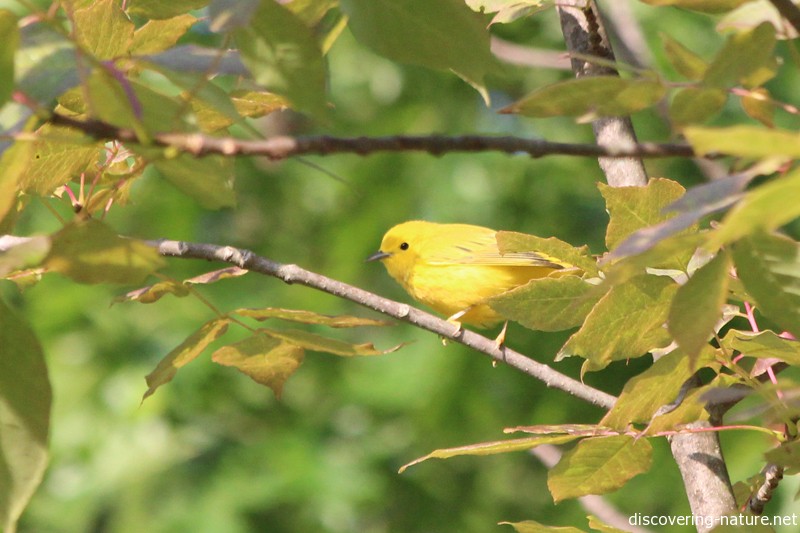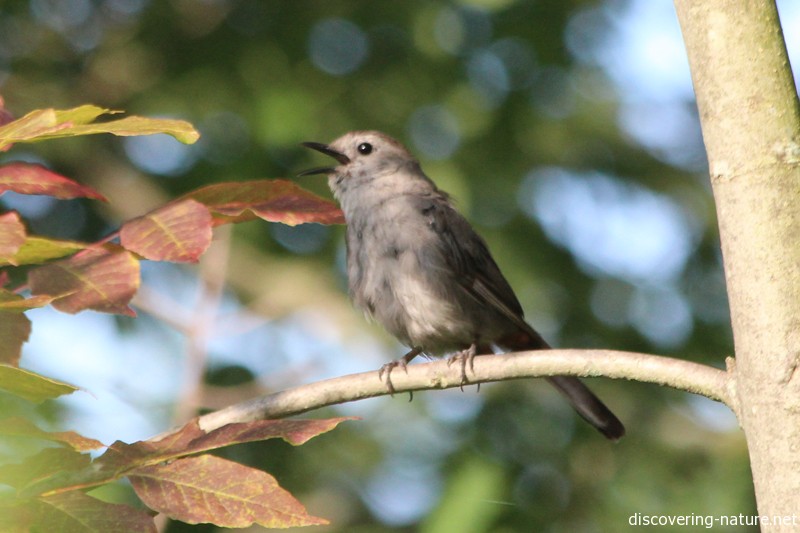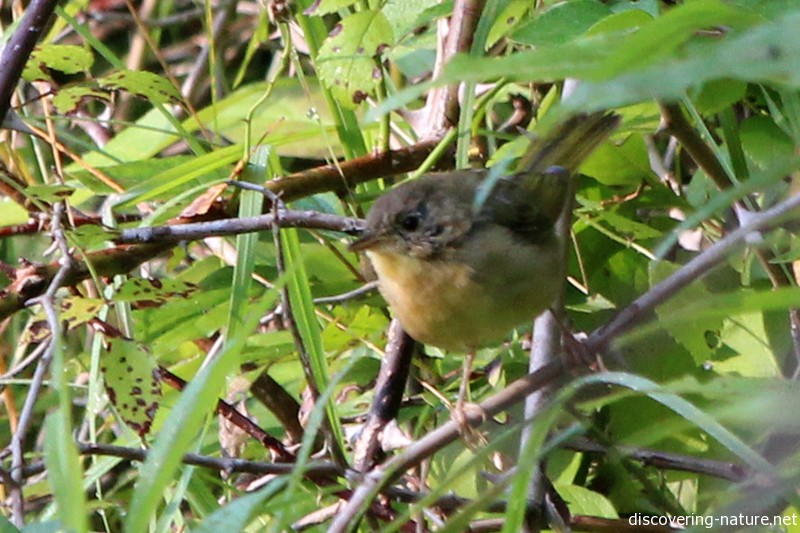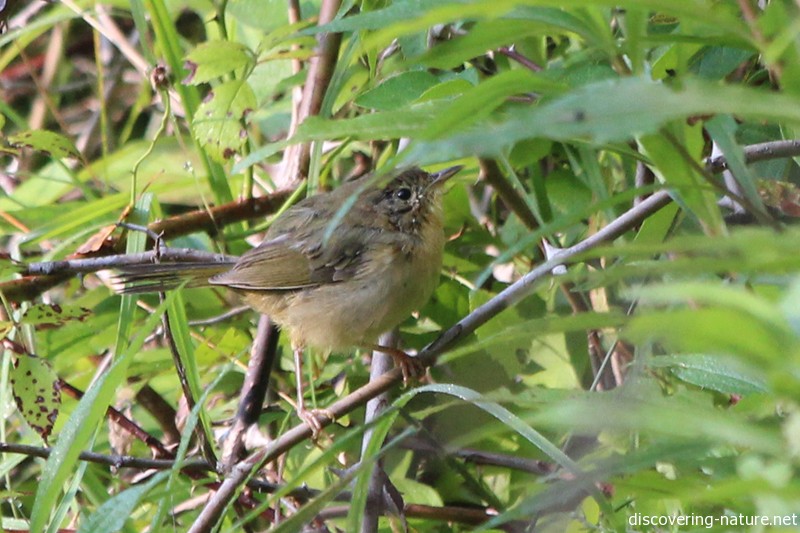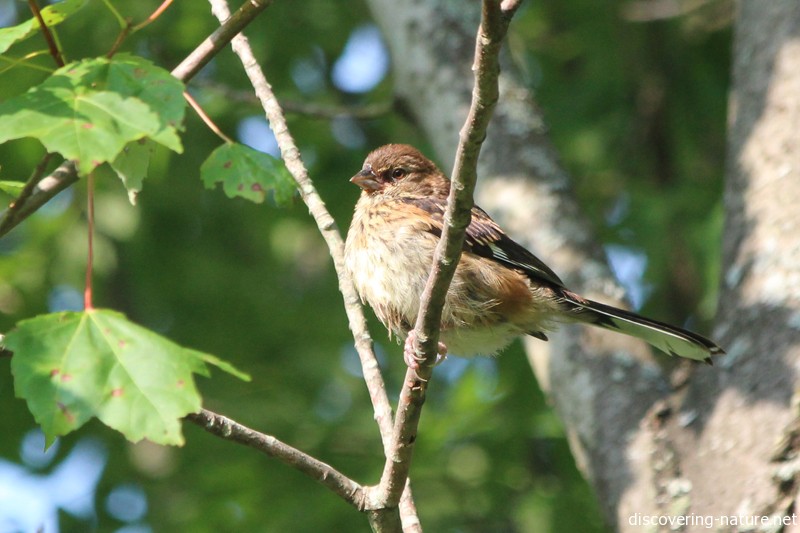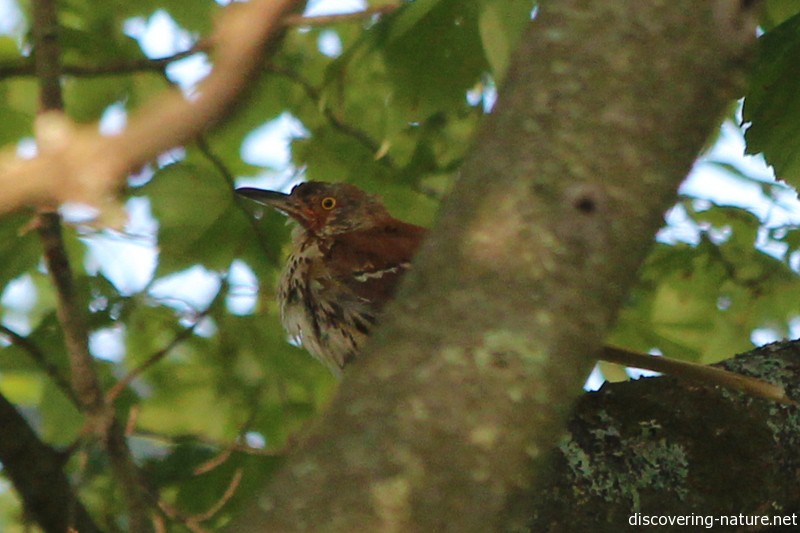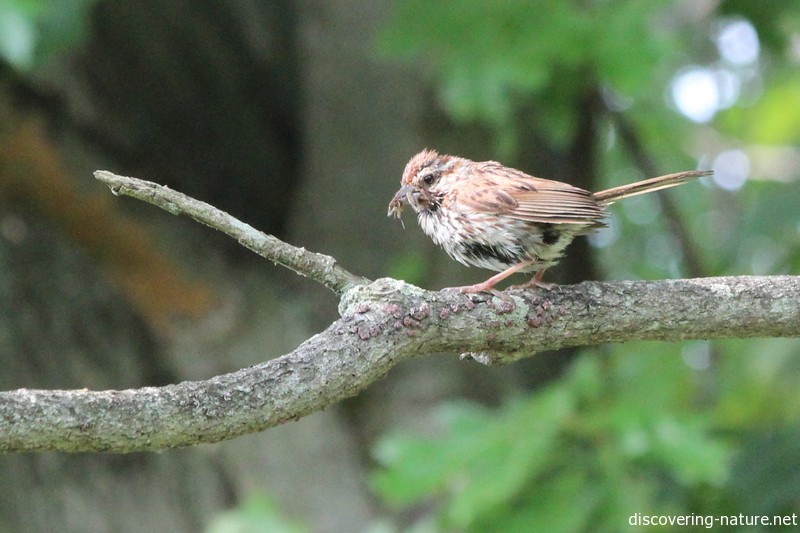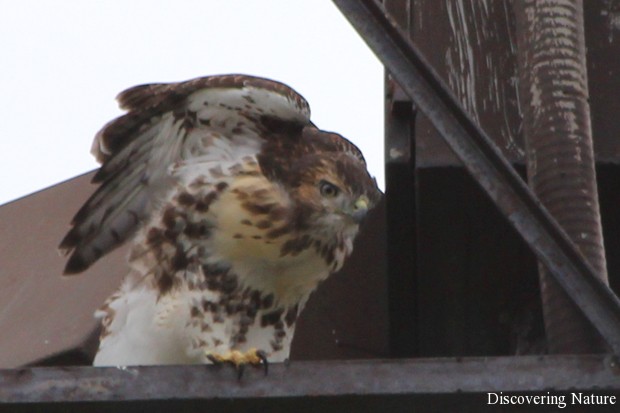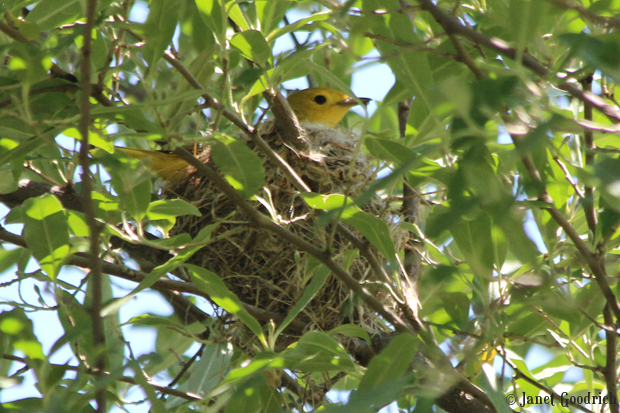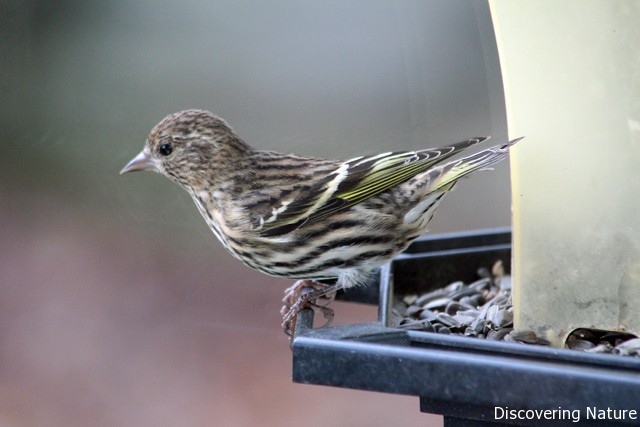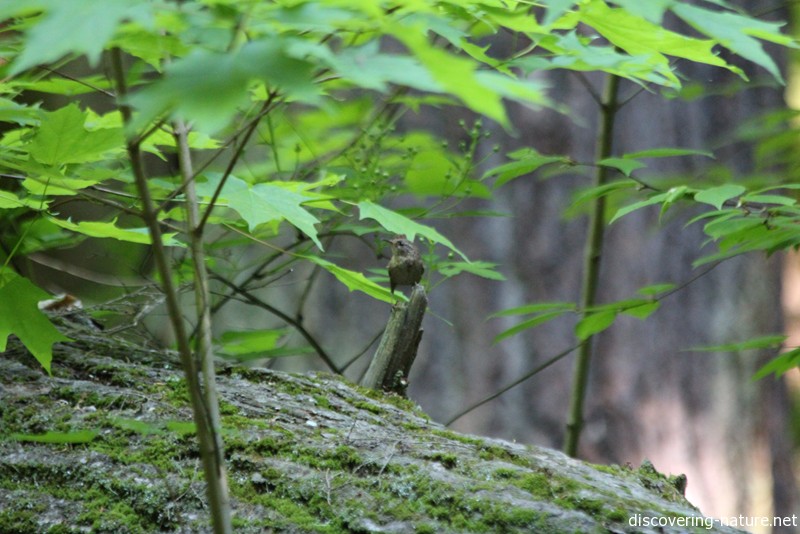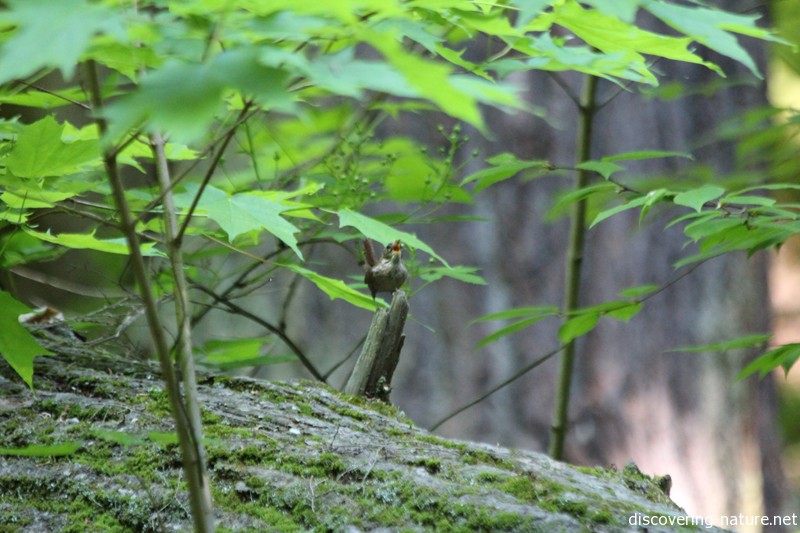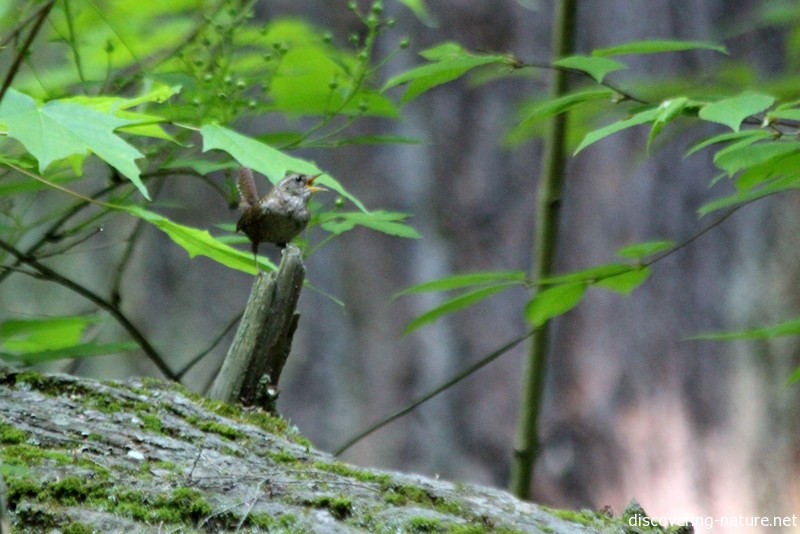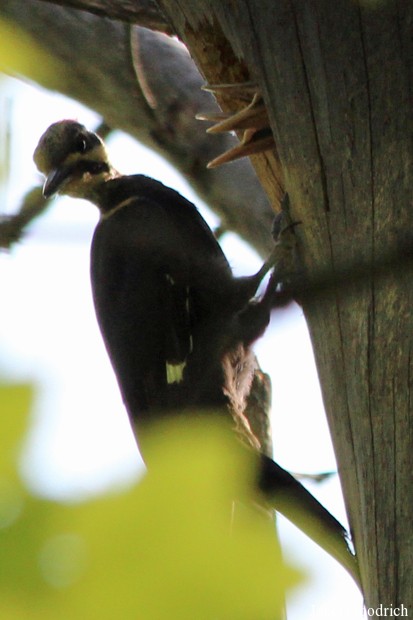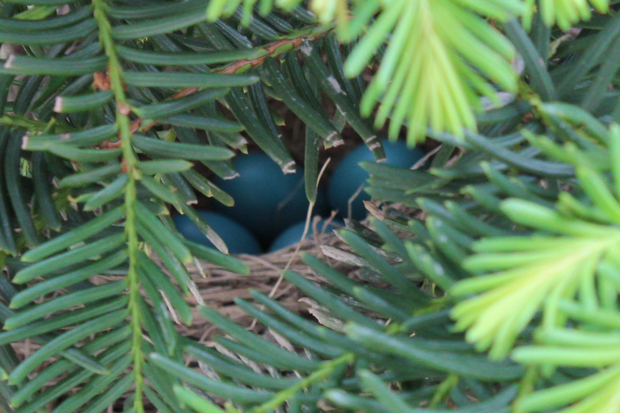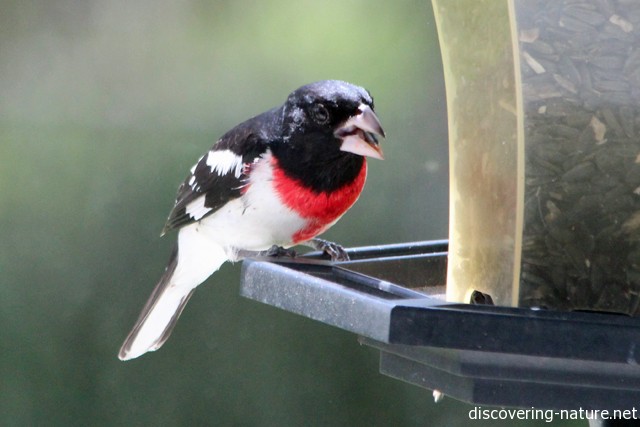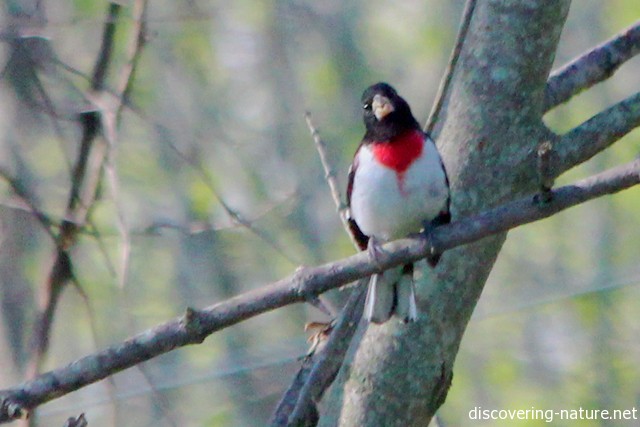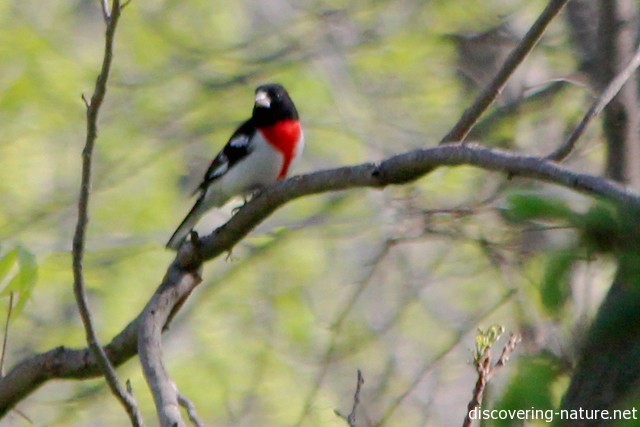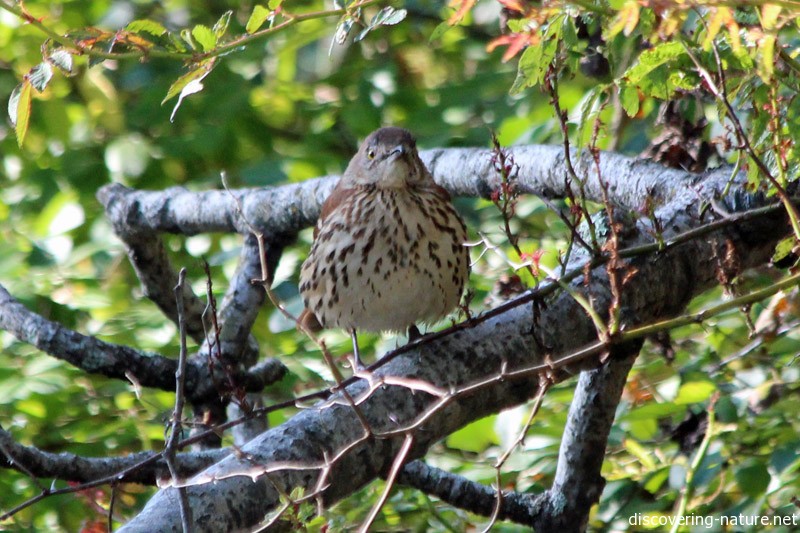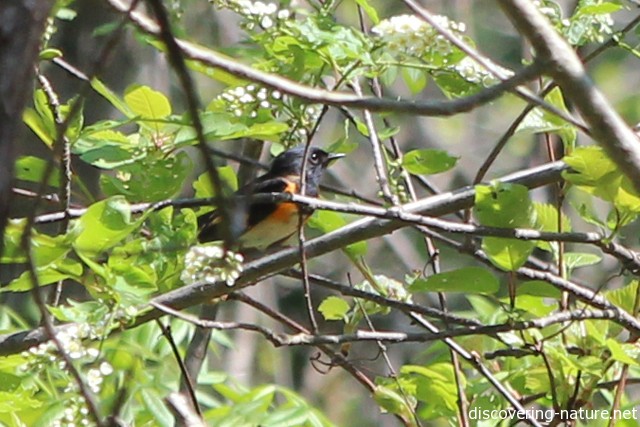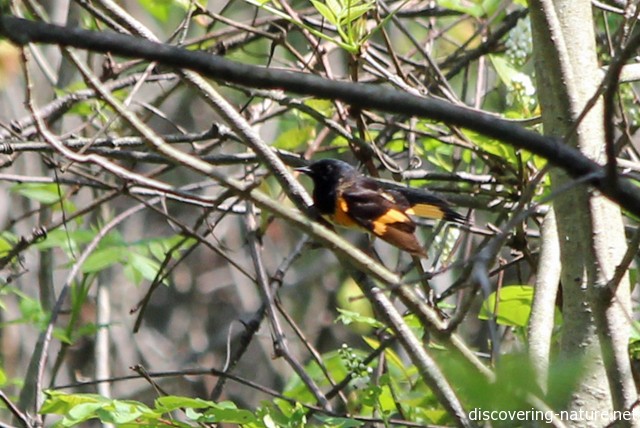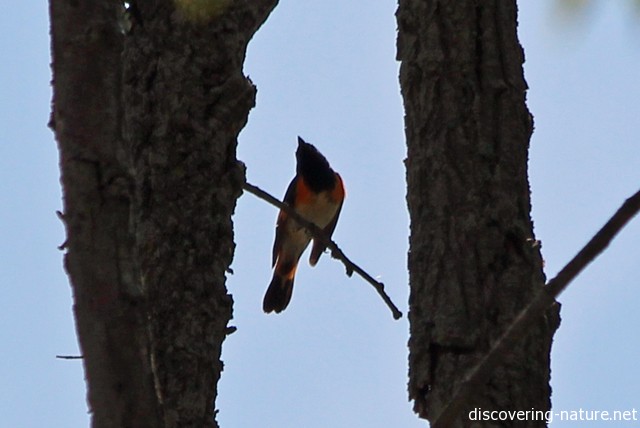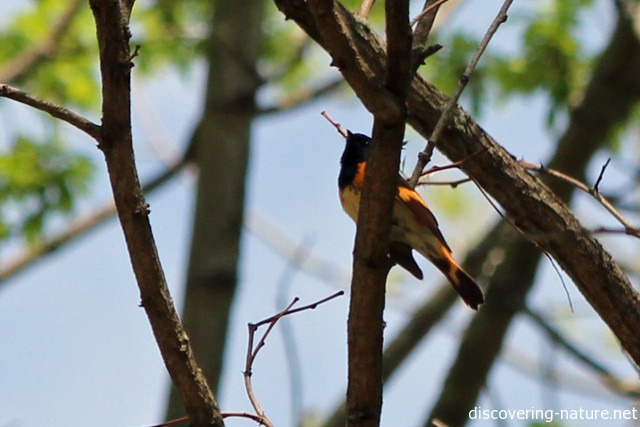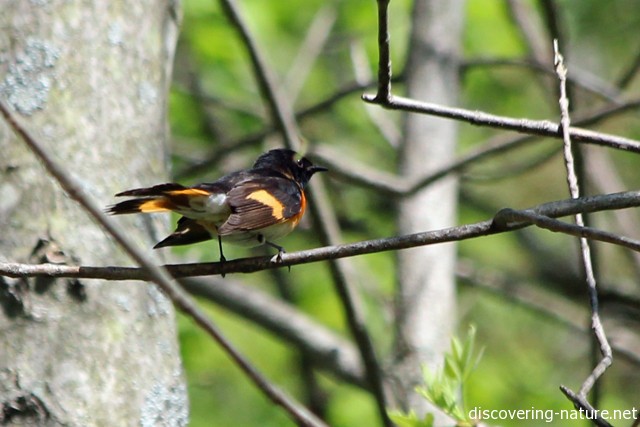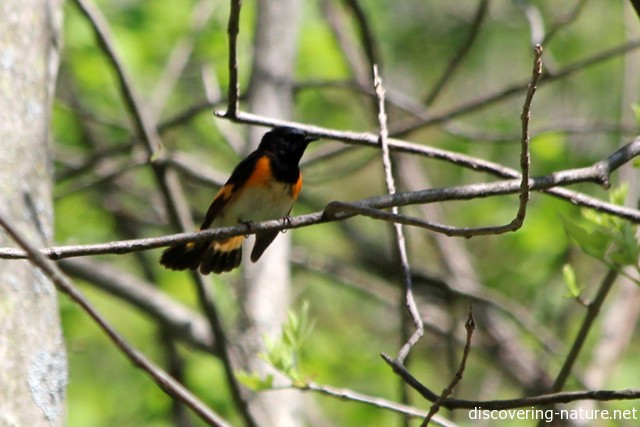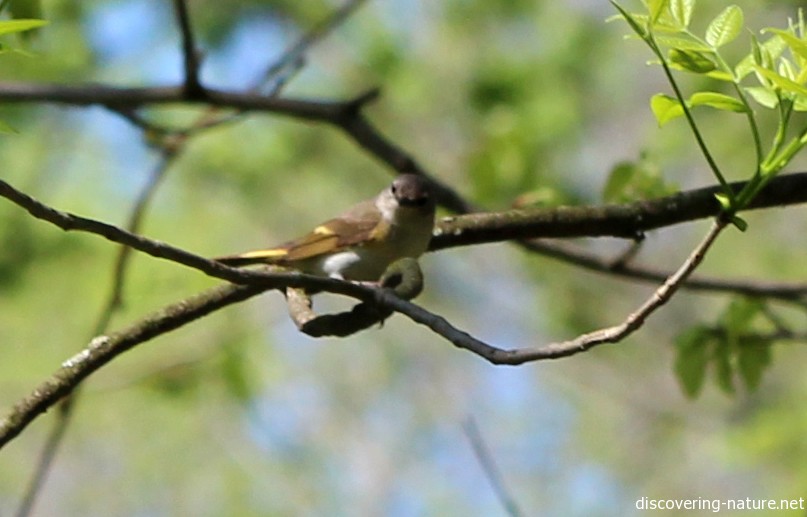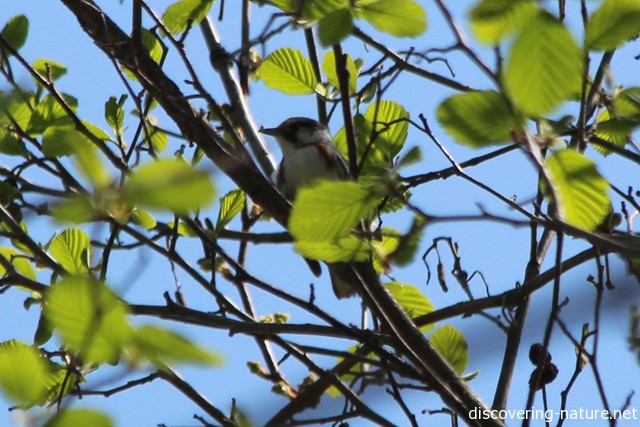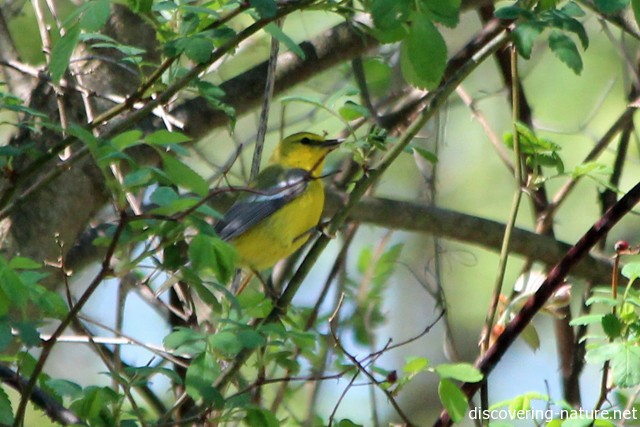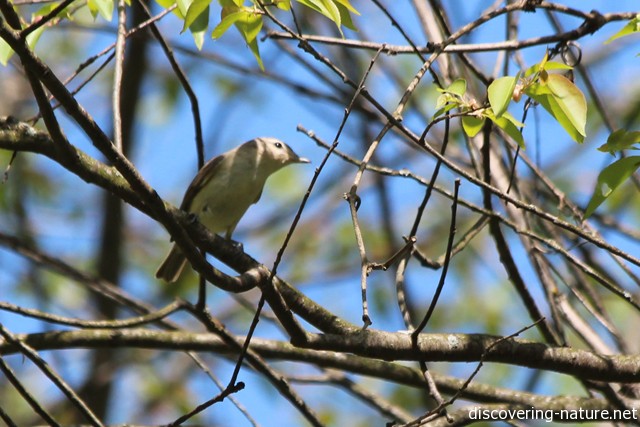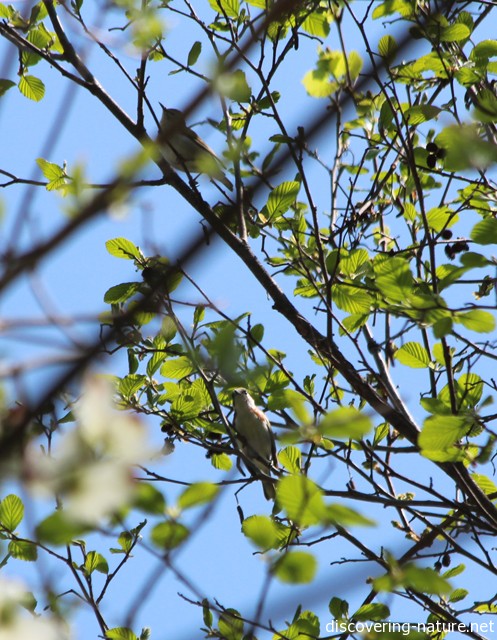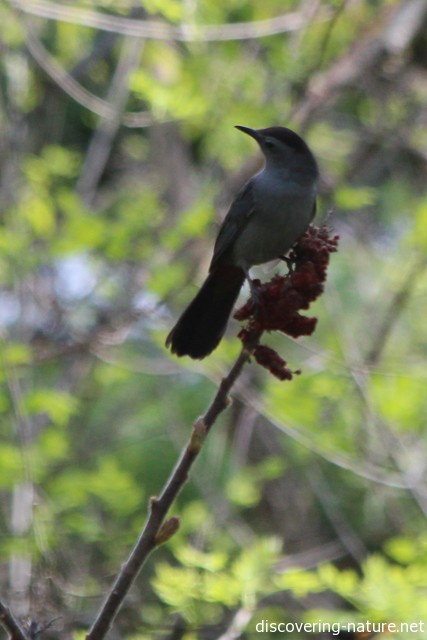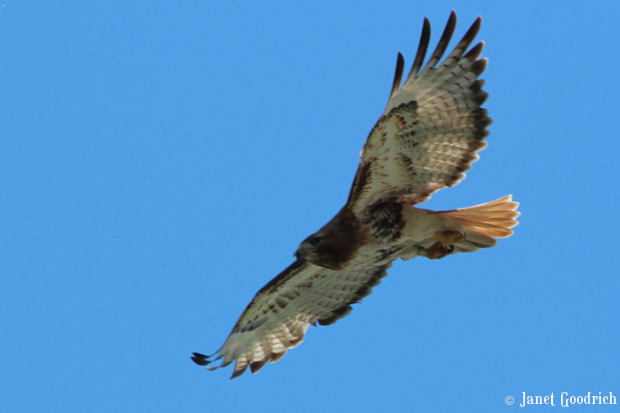Birds
-
Leucistic Red-tail
We’ve seen this large, snowy white raptor several times nearby since around November.
Naturally, I’ve thought it was a snowy owl. Last year snowies were on everyone’s radar because it was an irruption year, and I figured this might be one of the surplus young who were born in the year of plentiful lemmings.
We saw it about a week ago being mobbed by crows, and it was so large, and so white, I thought again: snowy owl! But…
Yesterday it was sitting in and near an old red-tailed hawk’s nest, vocalizing like crazy, and I got a couple of better (or at least, closer!) pictures.
Clearly not a snowy owl!
I noticed several things. It was not an owl call; it was the classic red-tail’s scream. (Another hawk answered from farther away!) It didn’t have yellow eyes. It didn’t have feathered feet. And it just didn’t have the blunt owl body.
Could there be such a thing as an albino red-tail? Searching online, I discovered there could — though the word in this case is not albino, but leucistic — partially albino. The eyes, after all, are not red. And there are some dark accents in the feathers.
We were tickled to have a snowy owl, but we’re even more tickled to have a rare hawk. At first I was sad, thinking its chances of survival would be poor without the protective coloration. But it’s already survived the winter, so its survival skills are pretty good. There aren’t that many predators to worry about. And a dense leaf canopy would hide it well enough from prey below.
As for being chased by its own kind as an enemy, well — it surely did seem to be conversing with that second hawk, and perhaps readying the nest for breeding season. So we’ll see. There is at least this picture online of a leucistic red-tail on friendly terms with a more typical one, so I have hope.
My daughter named it Marley, after the ghost in A Christmas Carol.
-
Superbirds
It was minus 8 degrees this morning, but these beautiful, hardy little chickadees are briskly about their business. Such brave little birds.
What else can they do? Think how much they must have to eat to survive in these temps. They have no time to waste.
According to The Forest Unseen, chickadees have various adaptations to the cold. They grow 50% more feathers in winter (the original down jacket). They sometimes sleep huddled together in a “ball of birds.” And they search constantly for food with eyes that are lined with twice as many receptors as humans’:
On a winter day, the birds need up to 65,000 joules of energy to keep themselves alive. Half this energy is used to shiver. These abstract measures become more understandable when they are converted into the currency of bird food. A spider the size of a comma on this page contains just one joule. A spider that fits into a capitalized letter holds one hundred joules. A word-sized beetle has two hundred and fifty joules. An oily sunflower seed has more than one thousand joules…
One of the reasons we keep the feeders filled around here!
There’s something inspiring about these “common” little birds. If they can brave these cold days with every appearance of good cheer, so can I.
-
Raptors
We went to the Cornell Lab for their Migration Celebration today. It was pretty chilly for outdoor activities, but they had lots of fun exhibits and activities inside. Outdoors, we saw a bird banding demo as well as a number of raptors up close — including E3, the offspring of Big Red and Ezra that was injured, rescued, and rehabilitated at the Lab.
Here are just a few of the others.
Golden eagle.
American kestrel.
Falcon mix.
Merlin.
Eagle owl.
Harris hawk.
Barred owl.
And a very talkative great horned owl!
There were some other raptors as well — a spectacled owl and a screech owl, and perhaps some others after we left. They are all captive birds that can’t live in the wild, but you still get a glimpse of their beauty and ferocity.
-
Young eagle
-
Adirondack Album
We visited the Adirondacks in July. Here is just a sampling of the beauties we enjoyed.
Bog Distant haze White-throated sparrow Mystery trail Hidden art Broad-winged hawk Maze Roadside frill Crowded hilltop Mountaintop view -
Spring and fall
It was in the 40’s this morning, and before the fog had cleared, I went for a walk.
It was pretty quiet, and I’d reconciled myself to the likelihood that I wouldn’t see much bird or wildlife activity. But when I reached my favorite hedgerow in the upper meadow, a yellow warbler greeted me.
There was lots of activity there — so much that it was difficult choosing what to focus on, and what to ignore. A catbird got busy tattling on me — “Awake! Fire! Foes! Awake!”
There were several yellowthroats, some of them females and some of them, I think, juveniles. They tried hard to be quiet, but the scolding and rustling weren’t hard to follow.
A blackburnian warbler flitted high up in the treetops. There was a young oriole, too, and a pileated woodpecker I heard but didn’t see. But closer to me were the calls of towhees, and I was tickled to see not one, but two, juveniles.
They seemed as curious about me as I was about them.
Another large, reddish bird scolded me with authority from the bushes, and I wondered if, with its speckled breast and rich cinnamon color, it was a wood thrush. I never did get a great picture, but this one made it clear what kind of bird it was.
A juvenile brown thrasher! Its long tail and yellow eye identified it as a younger version of one of my favorite birds.
This sparrow (I’m not sure what variety — perhaps a song sparrow) looks rumpled like a juvie, but with its beakfull of goodies it may be a mother supplementing her offspring’s diet.
I’d been out for nearly two hours and needed to be getting home, so I started the long walk back to the car, determined not to linger. Head down, walking quickly, I was startled by the sound of thrashing just ahead. It was a doe and two fawns. So that’s the picture I missed — but I have the memory. They melted away into the brush.
It was cool, like the fall, and in fact the fall is near at hand. But the leaves haven’t turned yet, and with all the youngsters I saw it seemed more like spring than fall.
-
Winter Wren
We went back to the Glen early this morning, this time taking the whole family. I knew when I took my husband along that we’d probably see something good. He carries the binoculars and always seems to find whatever we’re looking for.
Today was no exception. But it wasn’t the binoculars that brought the winter wren in close. It was his phone. When we heard our tiny brown friend along the creek bank, my husband brought All About Birds up on his phone and began playing the winter wren’s song. Sure enough, the real wren couldn’t resist the challenge.
He darted in close, looking for his rival and singing.
Normally I like to crop my photos, but not these. For one thing, in the dim light of the shady stream, my photos were grainy. For another, the surroundings help to highlight this bird’s size. He’s a tiny Pavarotti.
The ploy was so successful that another wren higher up in the woods also approached and entered the singing war. But having whipped up the avian passions to such a pitch, we decided to move on and let them go back to their normal routine.
What a treat to see him! You can read more about winter wrens here and here. Apparently if you live on the west coast, your winter wrens sound like the ones in Siberia, but the ones we have around here sound like the ones in England. Just one of the interesting tidbits I’m learning about these extraordinary talents in plain, brown packages.
-
On warblers
At a distance these little birds usually look drab, and the species are hardly distinguishable, but the binoculars show them to be beautifully colored and marked, and wonderfully various in their kinds. There is always something deeply enticing and pleasing to me in the sight of them. Perhaps because I was only dimly aware of them for so long, I always see them at first with a certain unexpectedness, and with the sense of gratitude that one feels for any goodness unearned and almost missed. In their secretive worlds of treetop and undergrowth, they seem among the most remote of the wild creatures. They see little of us, and we see even less of them. I think of them as being aloof somehow from common life. Certain of the most beautiful of them, I am sure, have lived and died for generations in some of our woods without being recognized by a human being. (Wendell Berry, “The Long-Legged House”)
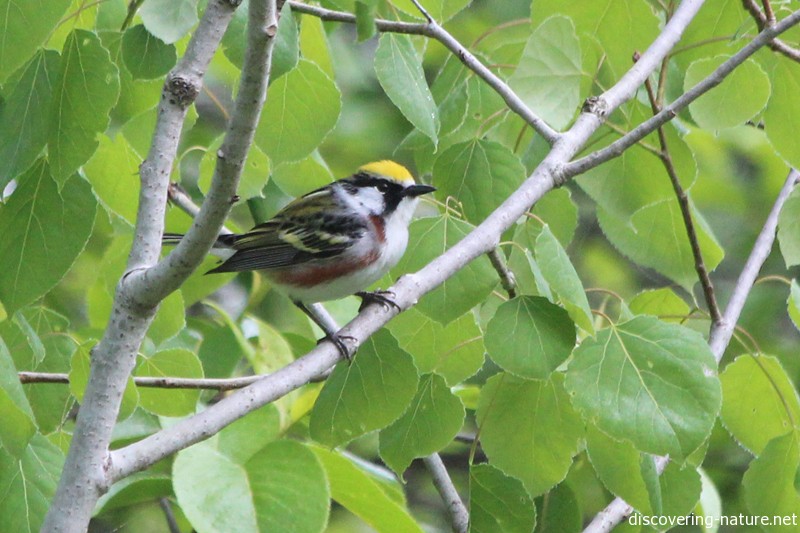
Chestnut-sided warbler -
Rose-breasted grosbeak
I love this guy.
Even though I rarely get a focused picture except when he’s right next to the window, munching seeds and warbling.
It’s my goal this summer: to get a really good picture of Mr. Grosbeak unawares. We have at least two pairs of them in our yard. Hopefully that doubles my chances!
One like this, but in better focus, would make me happy.
-
Tantalizing redstarts
They were darting around in the treetops — flashes of orange and black, fluttering and falling, males clashing over the territory near the river. As much noise as they make with their insistent calls, as colorfully as they flash among the leaves, they never really sit still for pictures. I did get a few fleeting digital glimpses…
The females were more sociable and came close several times. But still, I wasn’t quick enough to capture much.
There were other birds around too… a chestnut-sided warbler…
…a blue-wing, I think:
A warbling vireo:
Some mystery birds:
And the ever-present catbird.
Besides that there were red-eyed vireos singing, and an oriole. But I was preoccupied with trying to see the redstarts.
